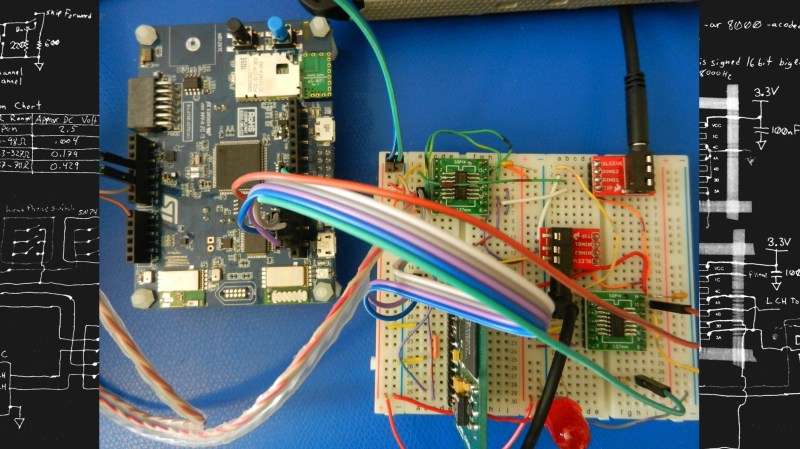“Sorry. I had music playing. Would you say that again?” If we had a money-unit every time someone tried talking to us while we were wearing headphones, we could afford a super-nice pair. For an Embedded C class, [extremerockets] built Listen Up!, a cutoff switch that pauses your music when someone wants your attention.
The idea was born while sheltering in place with his daughter, who likes loud music, but he does not want to holler to get her attention. Rather than deny her some auditory privacy, Listen Up! samples the ambient noise level, listens for a sustained rise in amplitude, like speech, and sends a pause signal to the phone. Someday, there may be an option to route the microphone’s audio into the headphones, but for now there is a text-to-speech module for verbalizing character strings. It might be a bit jarring to hear a call to dinner in the middle of a guitar riff, but we don’t like missing dinner either, so we’re with [extremerockets] on this one.
We don’t really need lots of money to get fun headphones, and we are not afraid of making our own.




















I like the hack, that’s pretty cool… One question though… why just not send an SMS or whatever preferred form of communication of the person to their cell?
Yes we all stare at our phones when we play loud music, and for sure that tiny little notification sound will be heard clearly in the middle of a monster guitar solo, right through the noise cancelling headphones!
At work we just beam someone in the back of the head with a stress ball
That’s a classic maneuver.
So kind of like reverse active earmuffs
+1
Foam padded small diameter on ear surface phones can sound good and do not isolate the user from those and things around the user. Back in the 80’s as a user I endured the things workers said thinking I couldn’t hear. Shop safety includes being aware of sounds around you. As a parent I would expect compliance in the household too.
Since the 80’s the loudness wars have turned most recordings into something a kin to white noise instead of the pink sound of acoustic reality. This causes 10 to 100 times the amplitude at the treble range where the most damage happens.
No ear buds!
Gotta say I was pretty interested to go down a rabbit hole after reading about the UCSD Embedded Course that spawned this project. Might have finally found a gateway to a Master’s Program that I’m really interested in
Nice attack on a common issue.
I always liked this feature of my brother’s Sony Walkman WM-R2. It had stereo microphones for recording, but it also had a “hot line” feature where volumes above a certain level on the mics would be blended with the tape audio. My brother could be listening to a tape with headphones, but if someone walked up to him and started talking, he could hear them clearly as well.